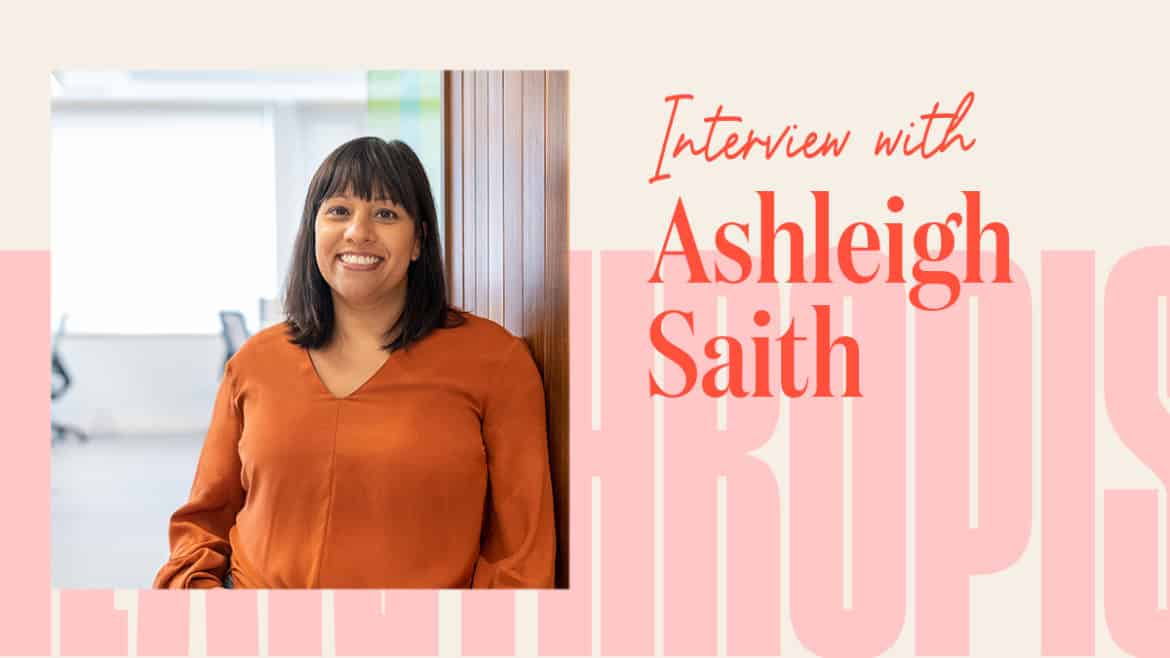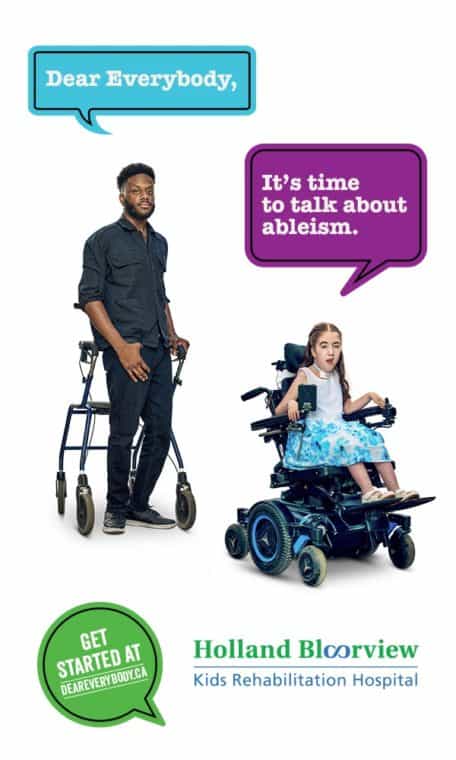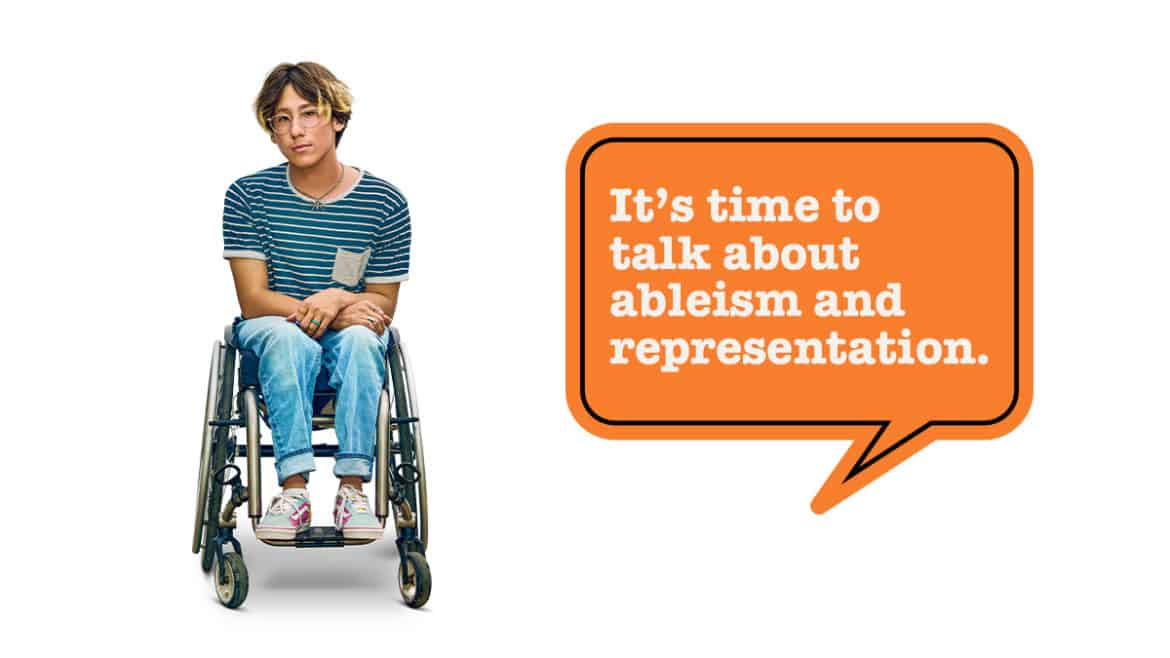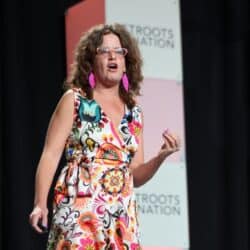The dominant narratives and stigma around disability can limit children from living full lives. Toronto’s Holland Bloorview Kids Rehabilitation Hospital believes it has a responsibility to challenge that narrative. Here’s how they’re doing it.
Toronto’s Holland Bloorview Kids Rehabilitation Hospital works to create the most meaningful and healthy futures for children, youth, and families through excellence in treatment and medical innovation.
The hospital also believes it has a responsibility to challenge the dominant narratives and stigma around disability that can limit children from living full lives. Through its five-year Dear Everybody awareness campaign, which launched in 2017, the hospital engaged children with disabilities in reshaping the conversation around disability.
In the first of a series of interviews on narrative change, series curator Christina Palassio spoke to Ashleigh Saith, VP of strategy and public engagement at Holland Bloorview, about the inspiration for the campaign, and how it’s helped to shift the way people perceive and talk about disability.

What’s the dominant disability narrative you come up against?
The prevailing narrative right now is characterized by a lack of value placed on disabled lives. People have a really hard time understanding that people with disabilities can and do live full and whole and meaningful lives. People think disability is sad and that kids with disabilities don’t have things to look forward to or ambitions of their own.
And what’s the counter-narrative you’re proposing?
We know that our kids are so ambitious, so successful, and have some of the biggest, wildest dreams, and it’s really important for us to bring that to the world. And so the narrative change we are pushing forward is to say “People with disabilities can live whole lives. They can have jobs, they can have interests and dreams, and they can be experts in things that have nothing to do with their disability.” And that we should place value on a person solely for their person and not for what their abilities are.
How does Holland Bloorview express its commitment to narrative change?
We see ourselves as having a really important role in creating an inclusive and equitable society. One of the tenets within our No Boundaries strategic plan is to lead and model social change. We want to take on some of the misconceptions around disability and ableism and change the narrative. Our goal is to advance awareness that disability is a facet of diversity that makes all of us unique.
There are more than 400,000 kids and youth in Canada with disabilities. Health outcomes for those kids aren’t necessarily the strongest. Twenty-five percent of kids with disabilities under 15 have unmet educational needs, a quarter of them are living in poverty, and more than half have zero or one close friend, which is a heartbreaking statistic to me. We know that people have been denied jobs because of disability, that their employment rates are lower.
What we hear from our clients, their families, and the disability community is there’s a need to offer up a platform for them to have more profile, more voice, and more ability to make narrative change. So we focus on inclusion internally. And the Dear Everybody anti-stigma campaign is what we did externally.
And has that always been the hospital’s position?
These conversations have been more and more at the forefront as we evolve how we view what healthcare means. Healthcare isn’t just about your physical body; it’s about your emotional well-being. It’s about your social location. And so as we’ve evolved as an organization to really understand what our client population needs, this work is coming to the forefront. Inclusion is just so important. Internally we tackle it by ensuring access to healthcare, and we think it’s also important to address it externally as well.
Could you tell us about the Dear Everybody campaign’s genesis and goals?
The idea for the campaign came because we were seeing lots of people and organizations thinking and talking about diversity and inclusion, but often disability was not inside of that conversation. People talk about racism and sexism and transphobia, but you don’t often hear about ableism.
2017 was the first year of the Dear Everybody campaign, and it was essentially a letter written by the kids at Holland Bloorview to the general public. And it was framed as “What do you want people to know about you or about disability?” The lines came directly from the kids. Generally when we’re working on these campaigns, the direction comes from our kids and families. They’re highly involved in informing the language that we use and the direction that we take.
The second year was asking kids to show people how they want to be seen. Years three and four were very focused on representation. We challenged brands and people who create content to have authentic representation of disability in their media, branding, and advertising campaigns. More than 20,000 people signed our pledge to commit to demanding that brands include diverse people with disabilities in their advertising. We also connected directly with companies who produce content and advertising to ask them to sign the Dear Everybody agreement and pledge to include disability in the picture.
The first few years of Dear Everybody were really setting the stage and explaining “What is disability? What is stigma?” Then, 2021 was focused on ableism. Ableism is still a word that not a ton of people understand, and we wanted to bring that to the forefront and do some education by having our kids talk about what ableism is and has looked like for them and what they hope to see in the future.

Who are the audiences for the campaign?
Our core audience for the past couple of years has been people between the ages of 18 to 54, which aligns really closely with our social media and donor audiences. They live in Ontario, they likely have kids in their lives or are youth themselves. And they have a certain level of comfort with technology because much of our campaign in the last two years has been digital-first.
A secondary audience for us in the last few years has been that corporate audience. We’re targeting corporate brands to sign our Dear Everybody pledge. Ultimately, we’re looking for attitude and behaviour shifts towards kids with disabilities. We want to see more inclusion of disability in the media landscape. We want to see better employment outcomes for kids and youth with disabilities. And we also want to see more inclusive classrooms. We’ve had a lot of teachers reach out to us because of the campaign and say “How do I bring this to my classroom?” And so we have outreach coordinators who go to classrooms and facilitate workshops to talk about what disability is, what that looks like, how that makes people feel.
How do you involve youth in your campaign planning?
It’s evolved and taken different forms in various years. In the first year, we showed campaign concepts to our kids and their families to take a look at and figure out what most resonated. Then we put out a call and asked kids, “What do you want people to know?” and facilitated workshops to get lines and words directly from them.
In 2021, we included kids and families earlier in the planning phase by running jam sessions to get their feedback on the last few years of the campaign and the strategic direction for 2022.
Who have been the most effective conveyors of your counter-narrative?
It’s the kids who have the biggest and most impactful voice. The campaign puts their voices forward, and it is authentically what they want they talk about, which makes their voice even more powerful.
We also worked with influencers for our 2021 campaign. One of them was Spencer West. He has a disability and speaks about disability quite often, and he helped us bring this conversation about ableism over to his audience. We also wanted to make sure, because our campaign was about educating people about ableism, that we did have abled folks because that’s part of allyship. So we partnered with a couple other influencers who have audiences who may not have heard this word before to bring it forward.
How do you measure how public perceptions on disability are changing over time and what impact your campaign may be having?
We do an omnibus survey every year that helps to inform the way that we frame our conversations. We survey 1,500 Canadians 18 and older through an online panel. We typically use the same questions every year, and then we might throw a couple extra just to see what’s out there.
In years three and four, when our focus was very heavily on representation, we asked specific questions about whether people would be more inclined to purchase a product from a brand that represents disability. In 2020, more than 70% of respondents said it was important for Canadians with disabilities to be featured in public-facing media. And that was a 5% increase over the previous year.
That information is really valuable to us, and to our work with our corporate partners.
In 2021 we asked people, “Do you know what racism is? Do you know what sexism is?” And “Do you know what ableism is?” And the answer for ableism was very few people actually know what it is. We’ll run that survey again in the coming years to measure whether this year’s campaign had an impact on bringing that kind of education forward.

What feedback have you gotten from the kids and families you work with?
They say that the campaign has opened doors for people to have conversations. It’s helped those of us who don’t have disabilities to understand what our role is as aspiring allies to address ableism. It’s my job as an abled person to advocate. Our kids and families have expressed really positive reactions that this kind of education is happening. And people in our organization feel very close to this campaign. It’s a real testament to how well we’ve listened to our families and our clients about what was important to them and how they wanted us to position ourselves.
What role do non-profits have to play in advancing narrative change on the issues they work on?
I think non-profits play a really important role when it comes to narrative change and advocacy. We are often at the front lines of these conversations. When you’re that close to the issue, you really understand what’s going on and you have a different perspective in terms of what needs to change. So I think non-profits really are uniquely positioned to lead change – obviously, alongside the people that they’re leading the change for.
I think non-profits play a really important role when it comes to narrative change and advocacy. We are often at the front lines of these conversations.
Ashleigh Saith, Holland Bloorview
At Holland Bloorview, we think of ourselves as amplifiers. We want to amplify the voices of the kids and youth that we serve. And I think that’s really important positioning for non-profits to think about when they’re getting into the advocacy space: how do we make sure that there are no missing voices?
What challenges have you run into while trying to shift the narrative around disability?
When you’re working in a social justice space, the narrative in the grassroots can change really quickly. For example, what is considered acceptable and unacceptable language when referring to disability has changed. It can be hard to stay on top of things. We as the hospital may take a little bit longer to make the changes because we are such a large organization. But as a team, we try to be as responsive as possible as we’re developing these campaigns, and we try to listen more than we talk.


